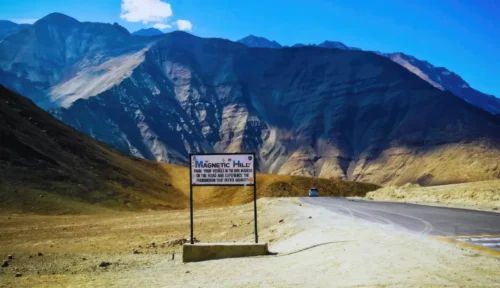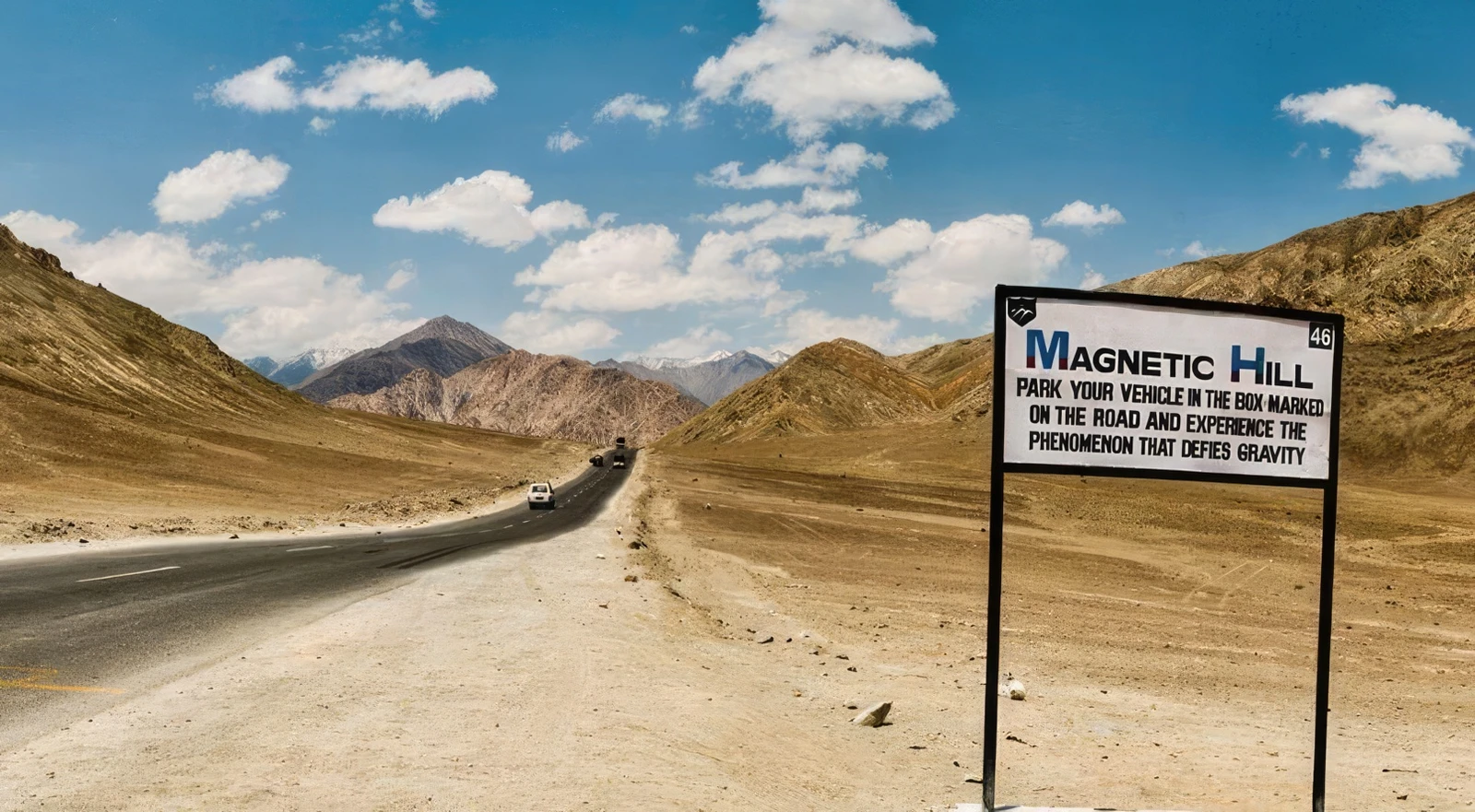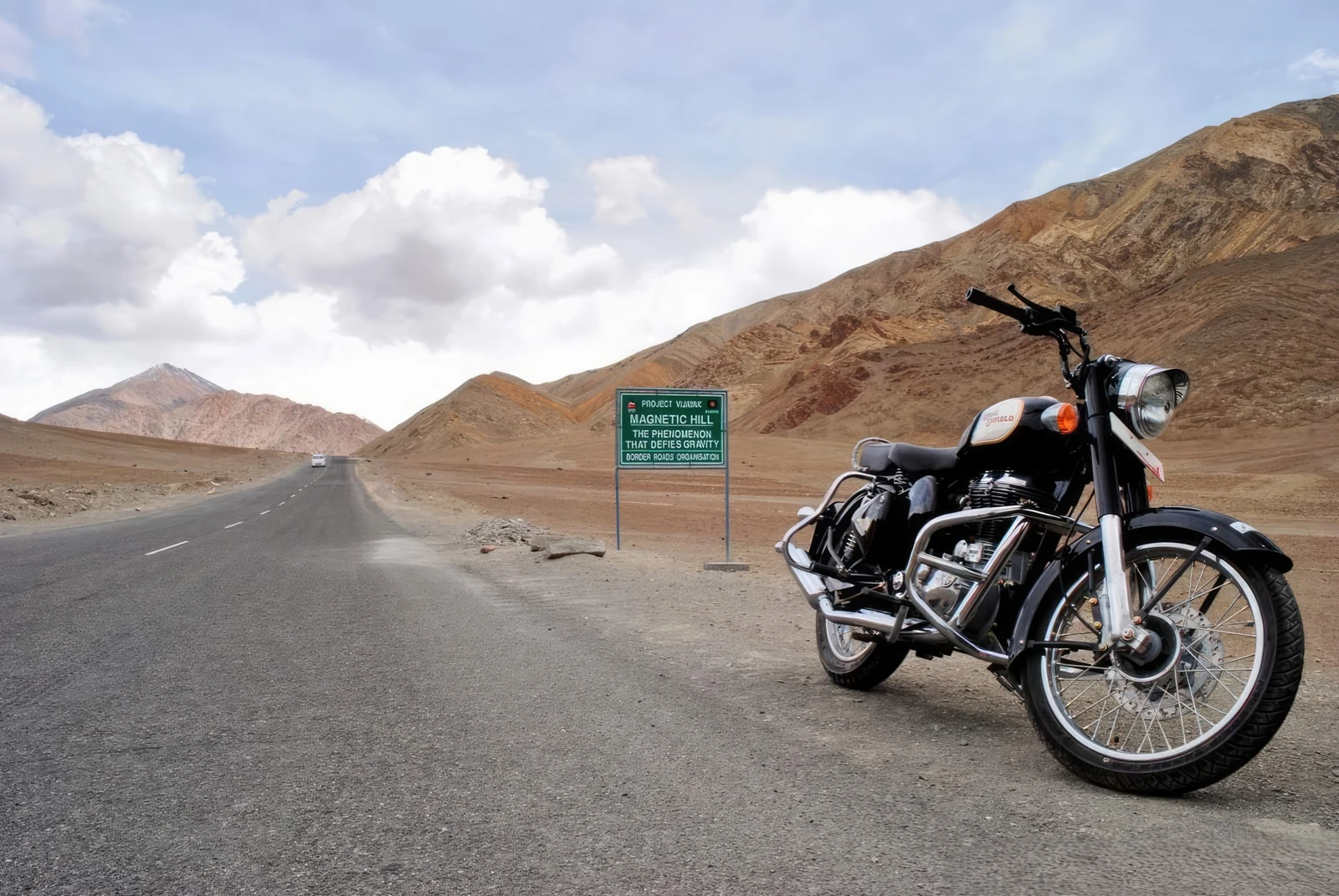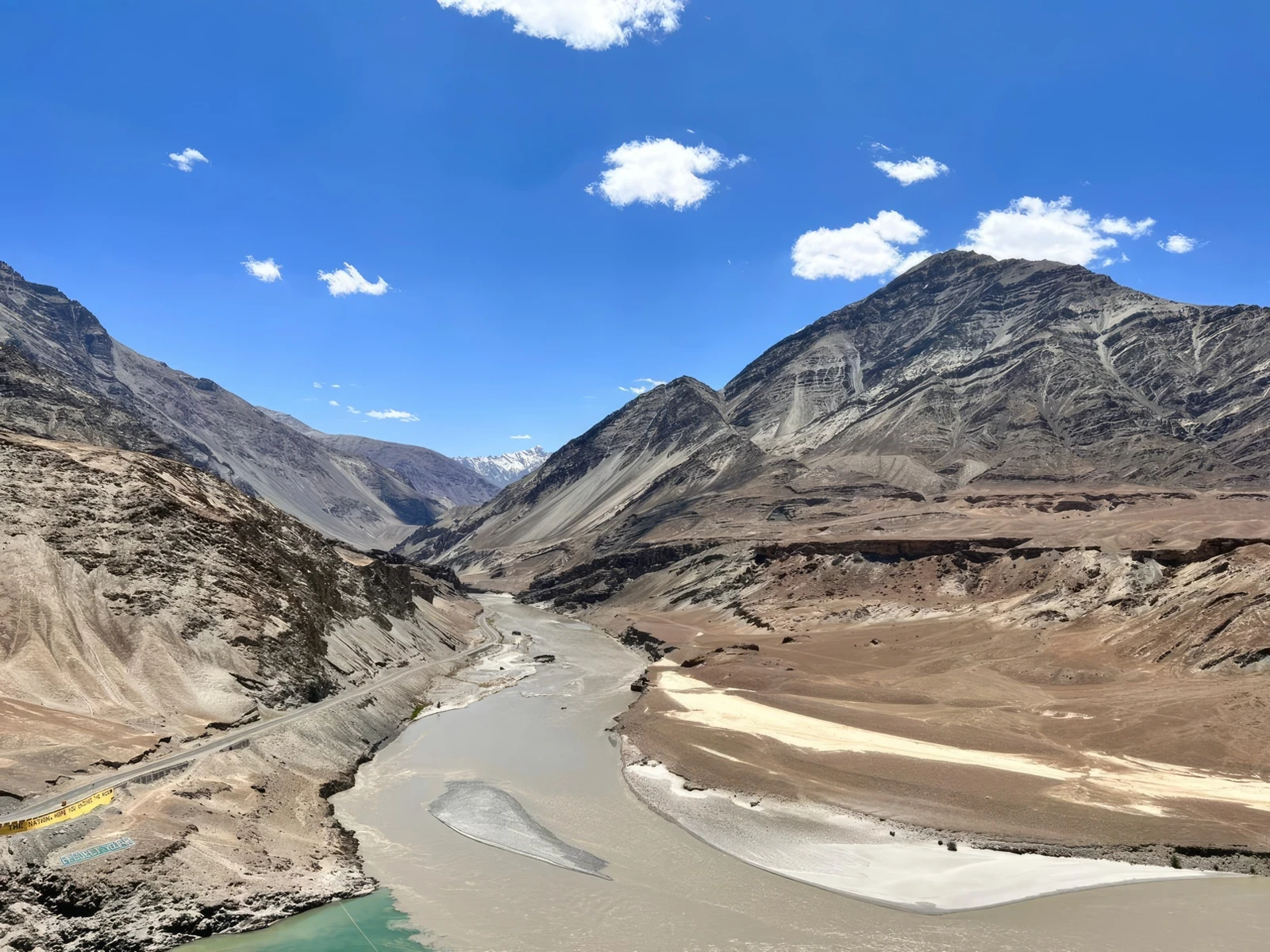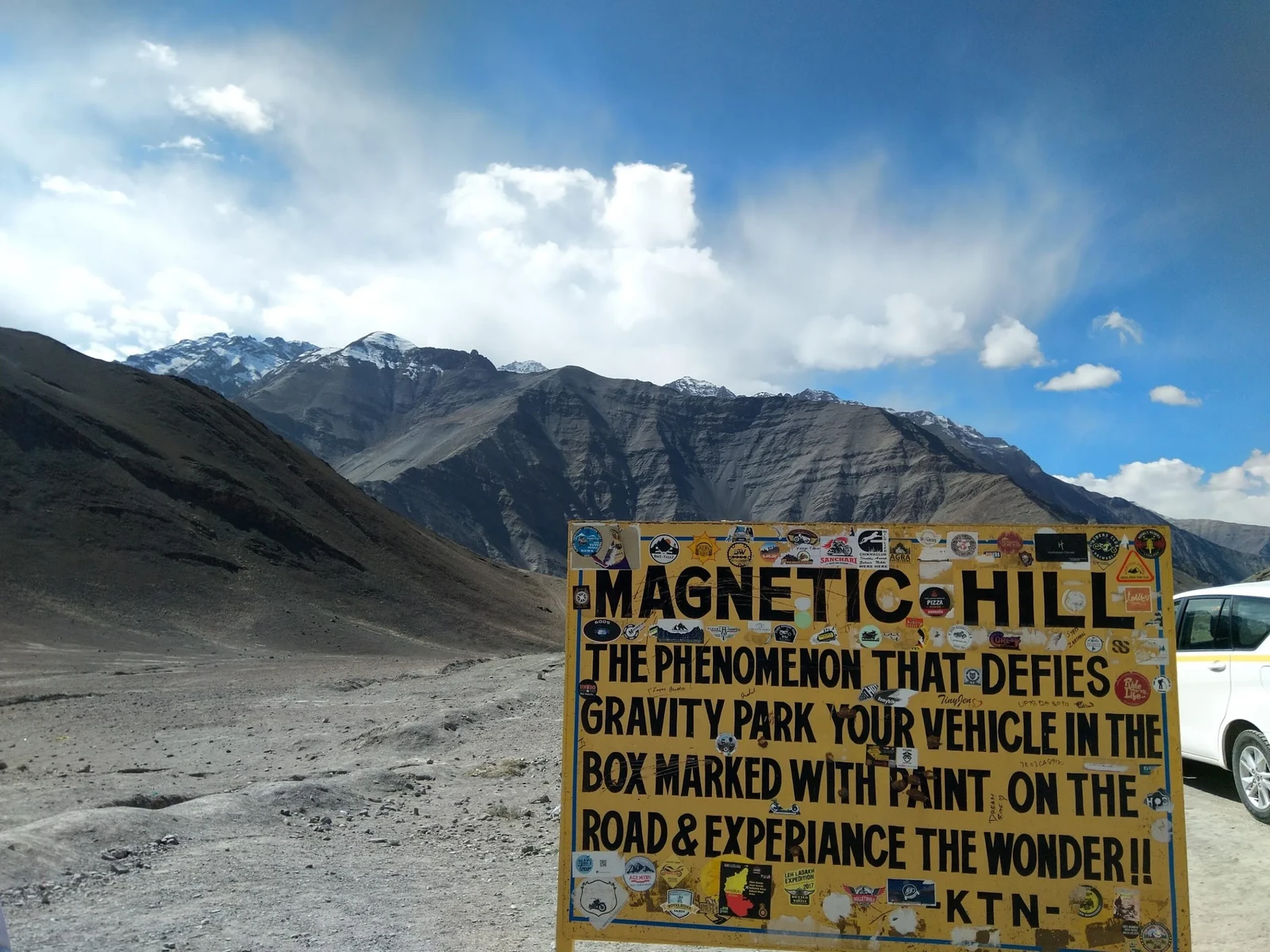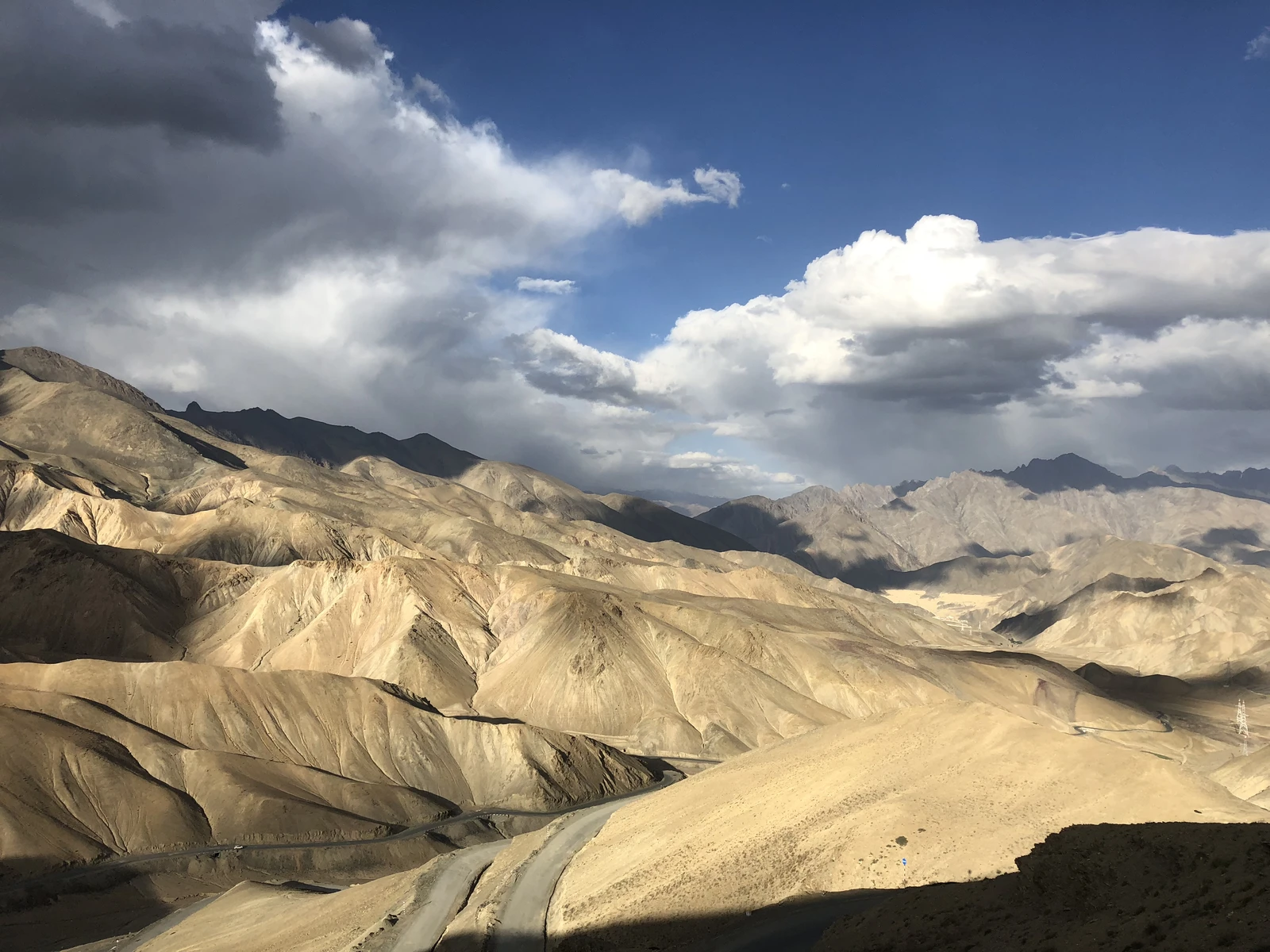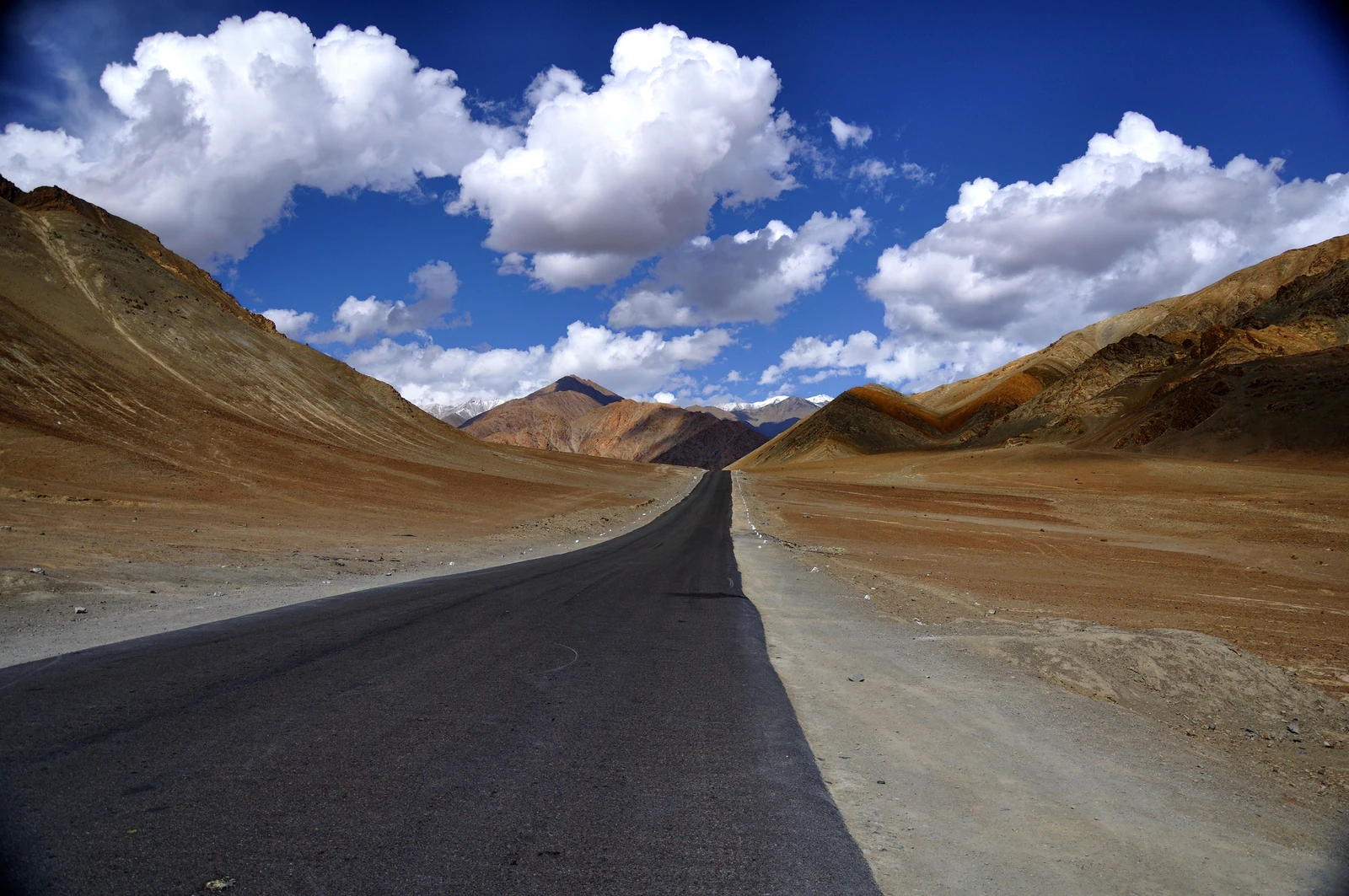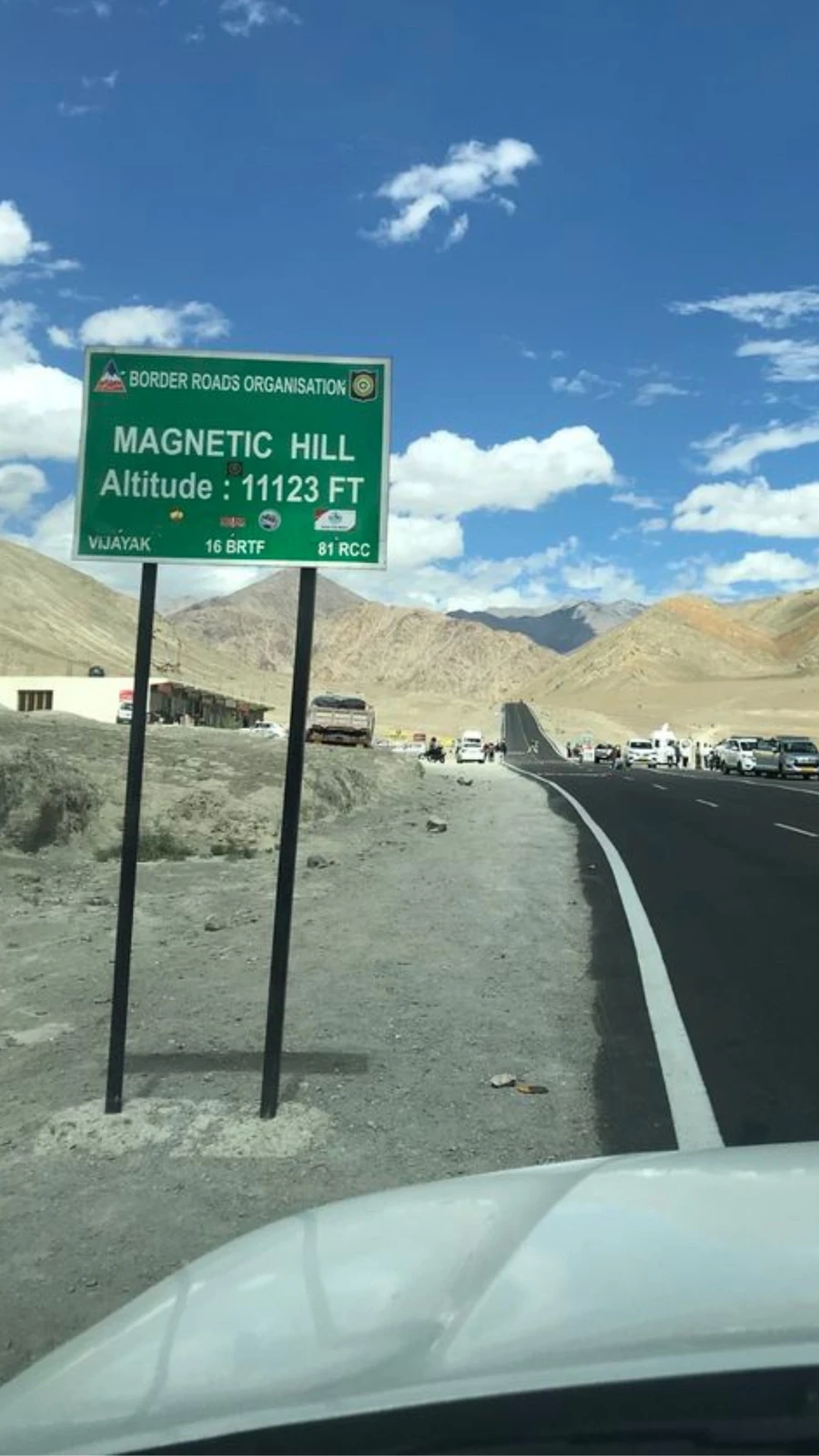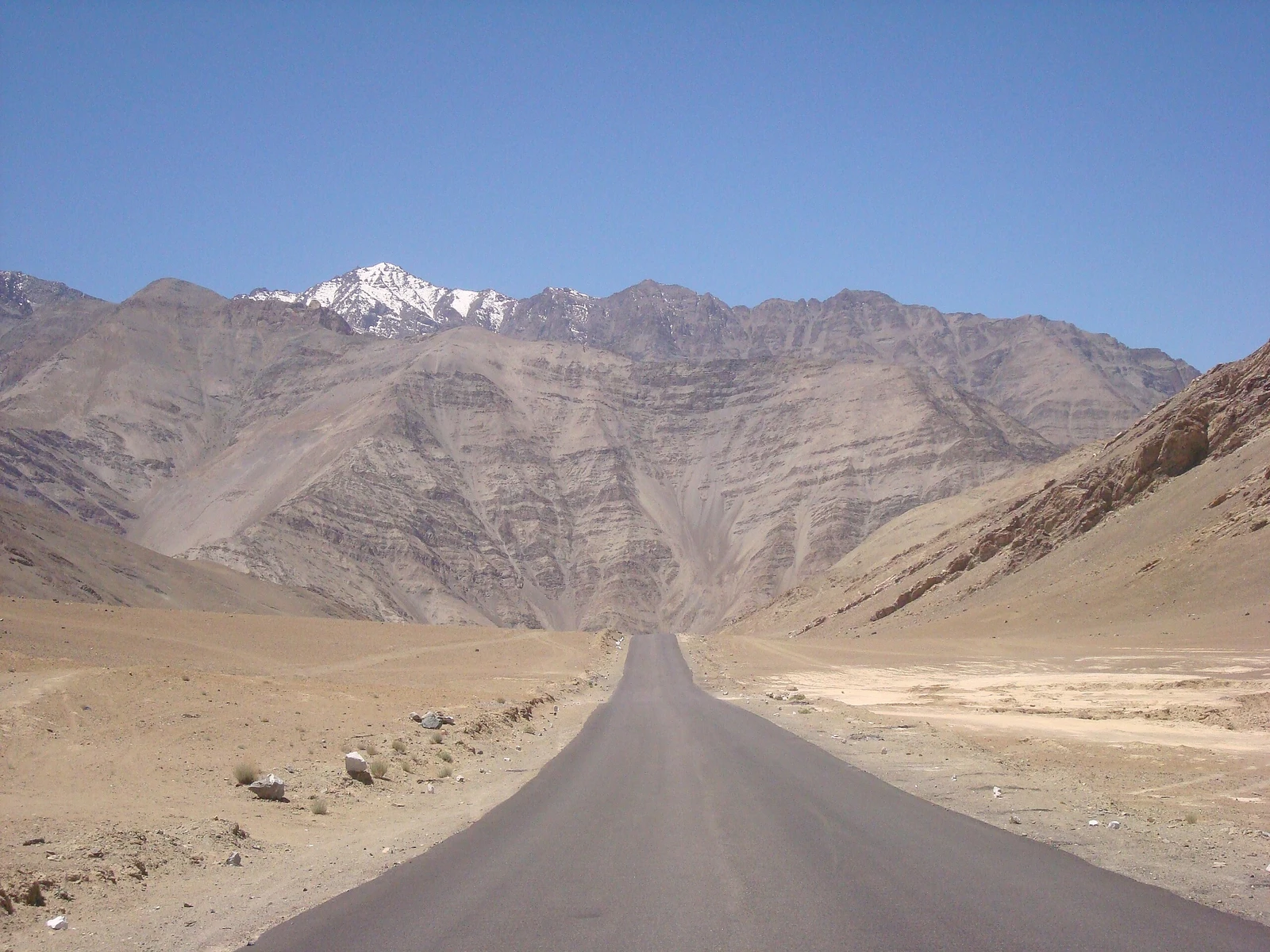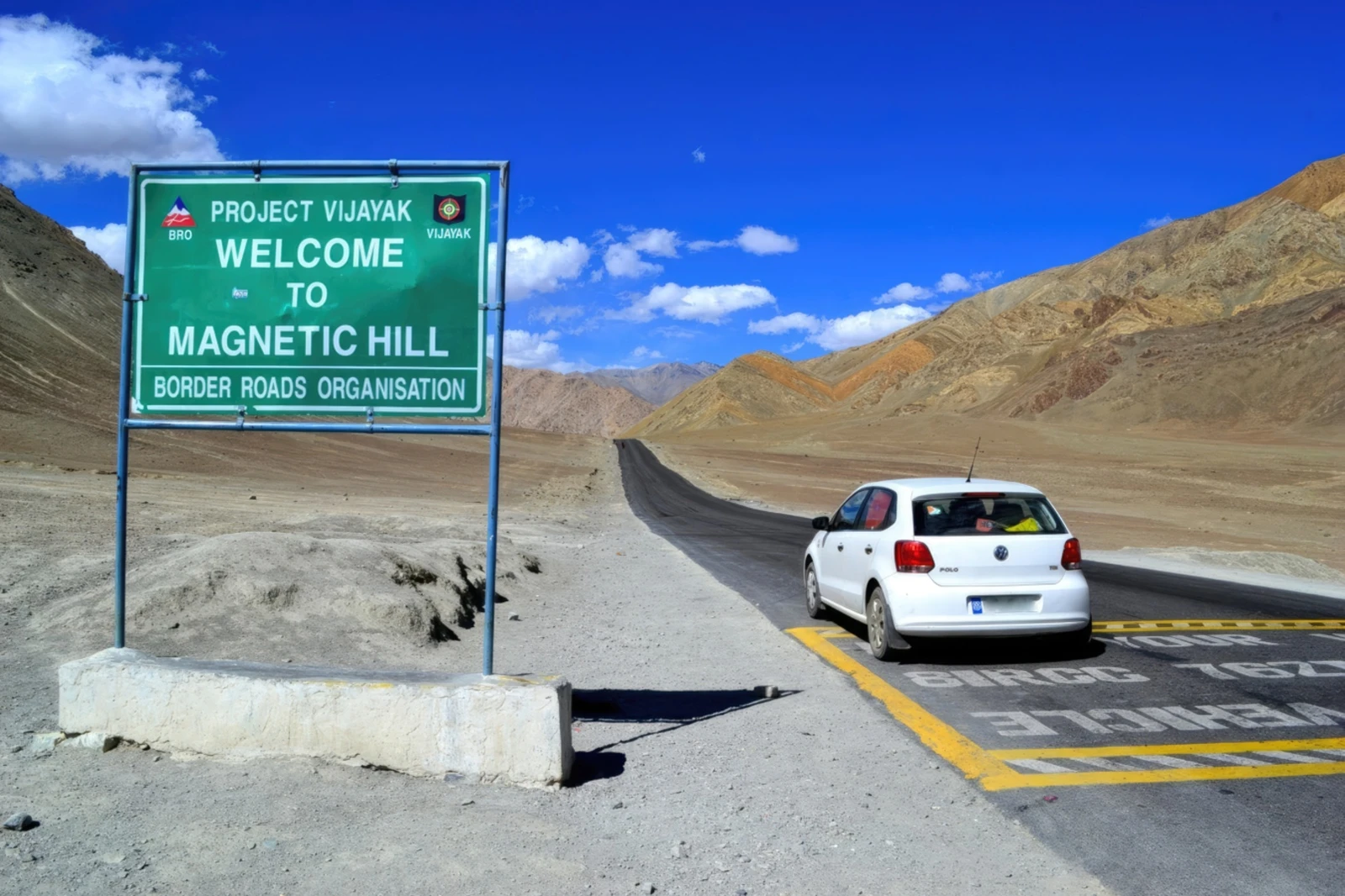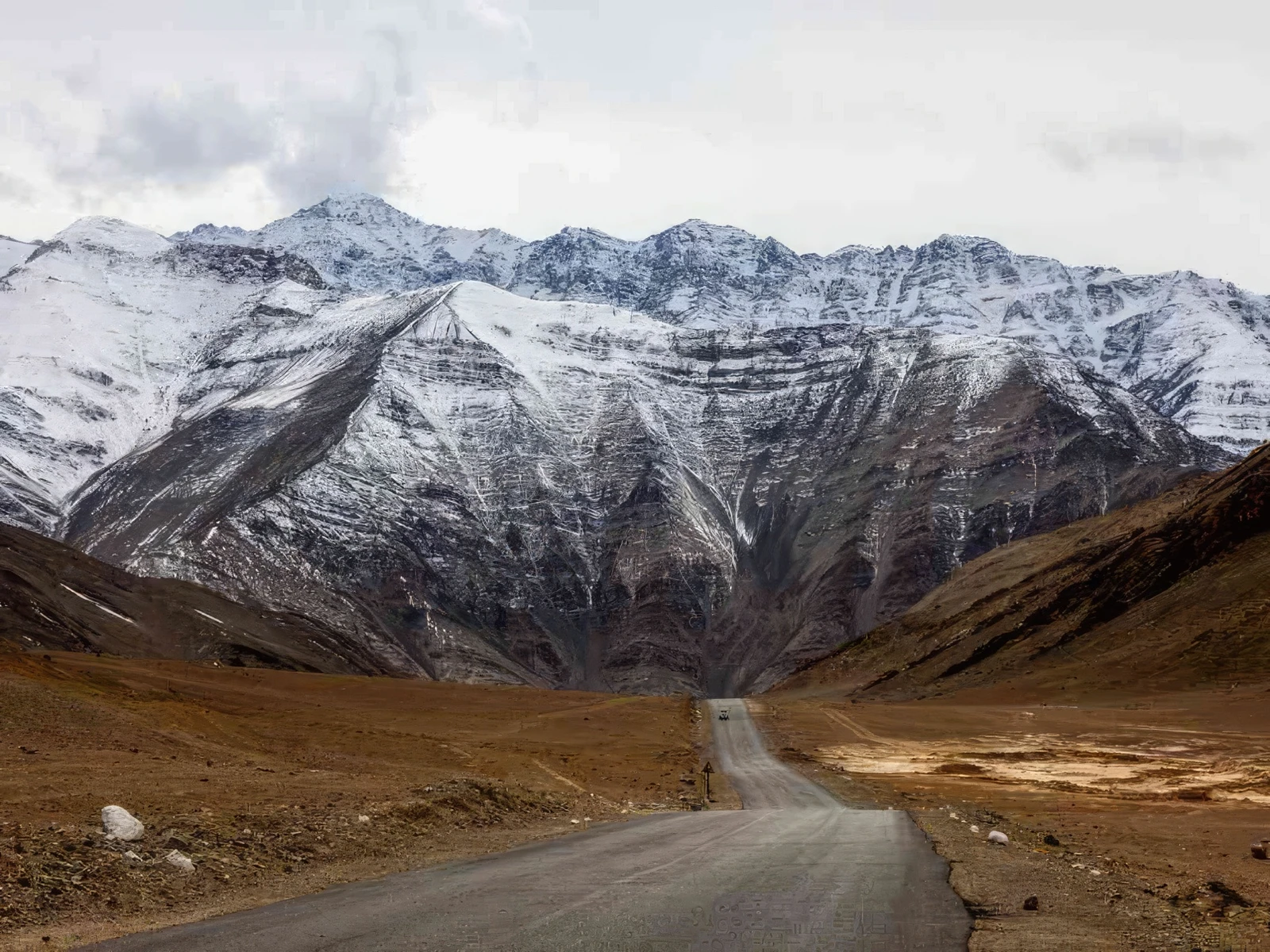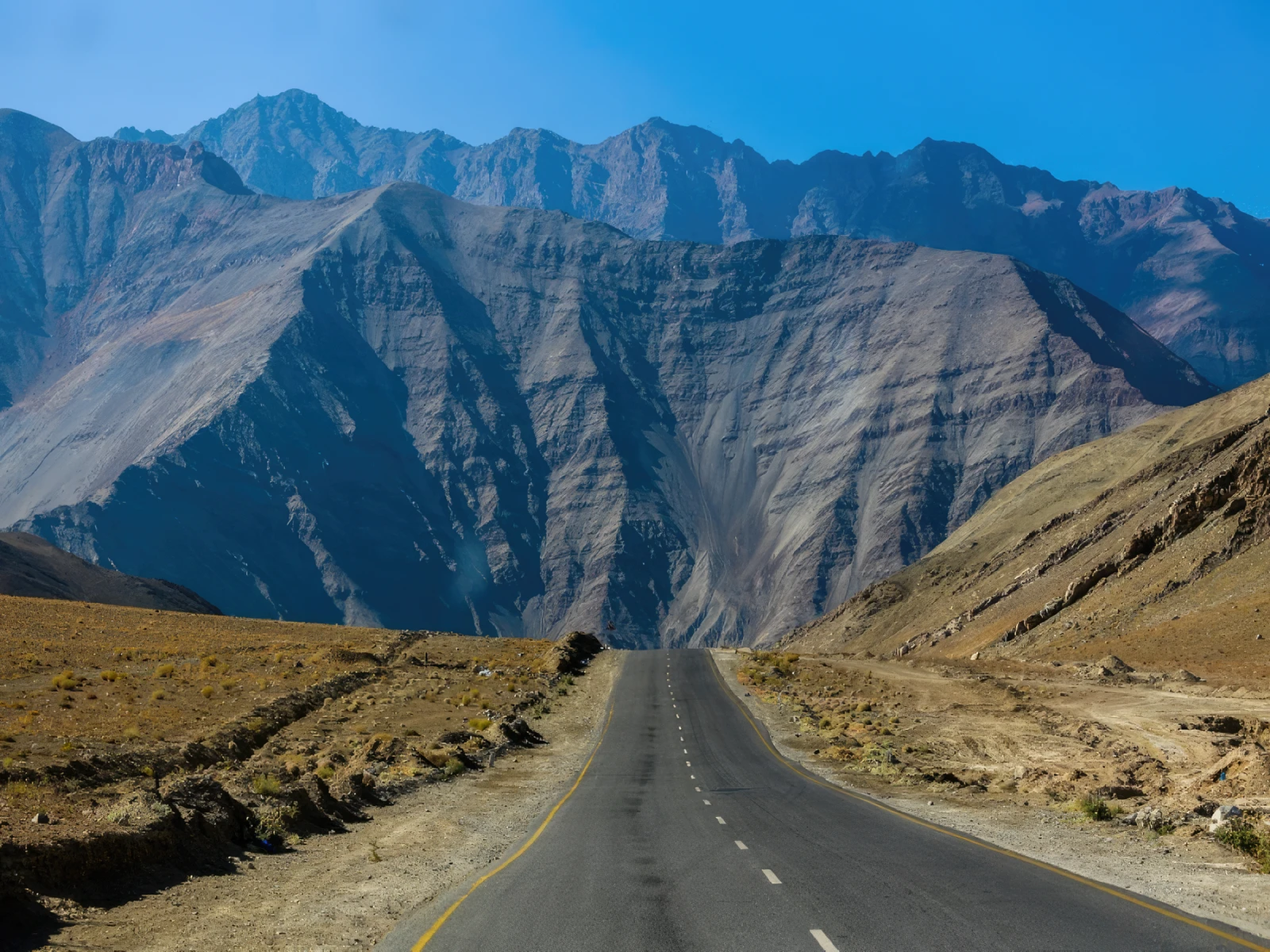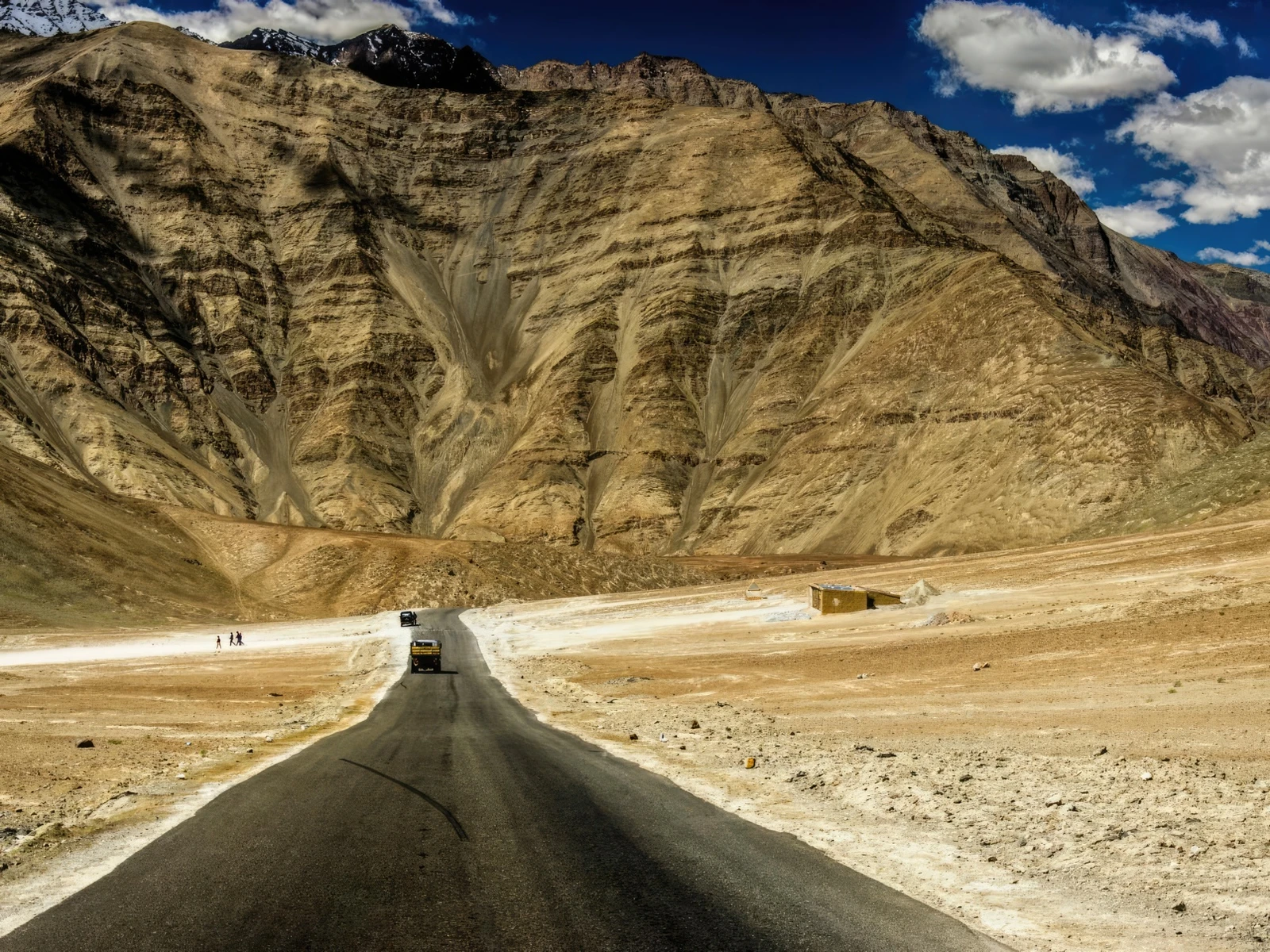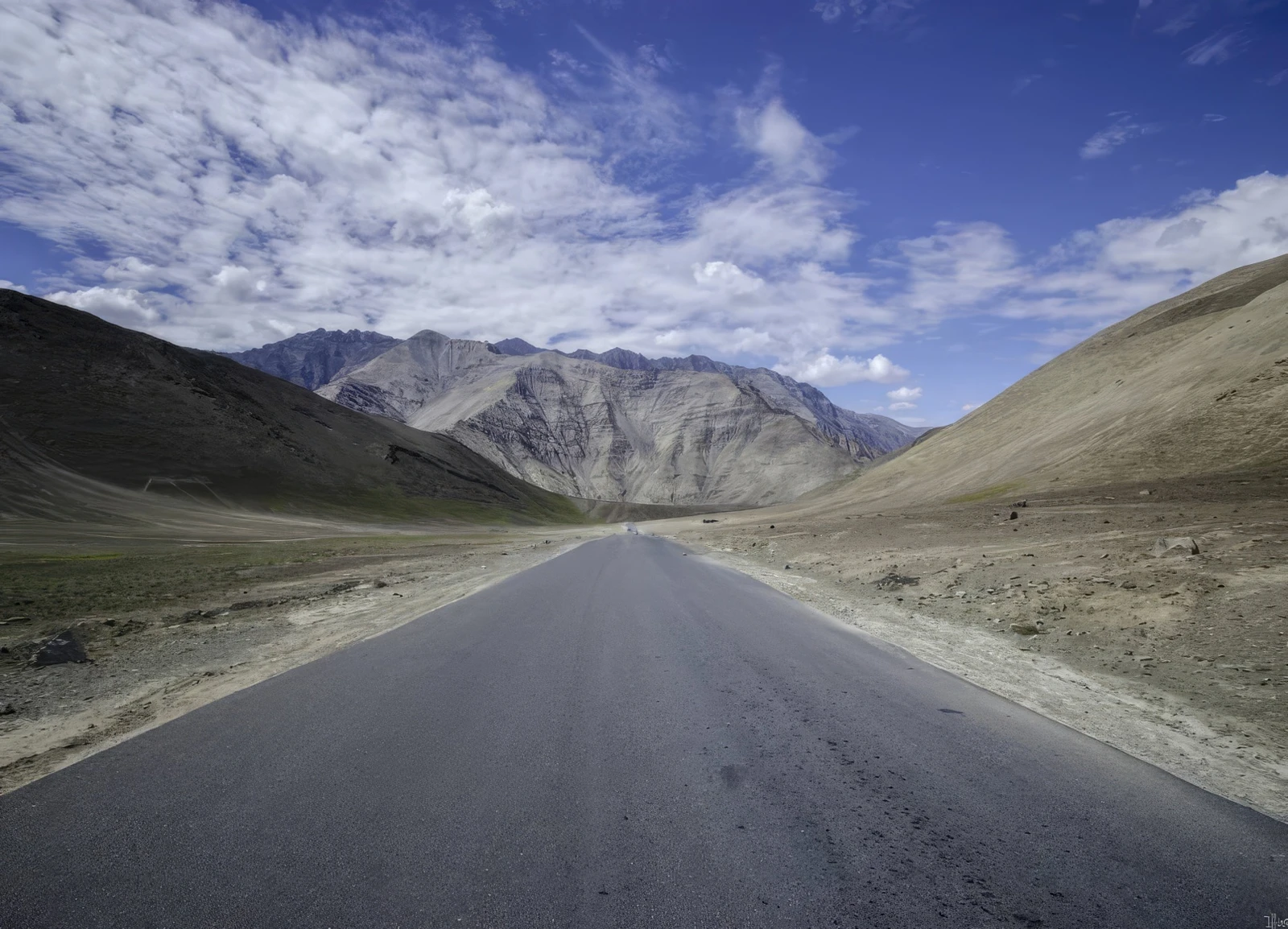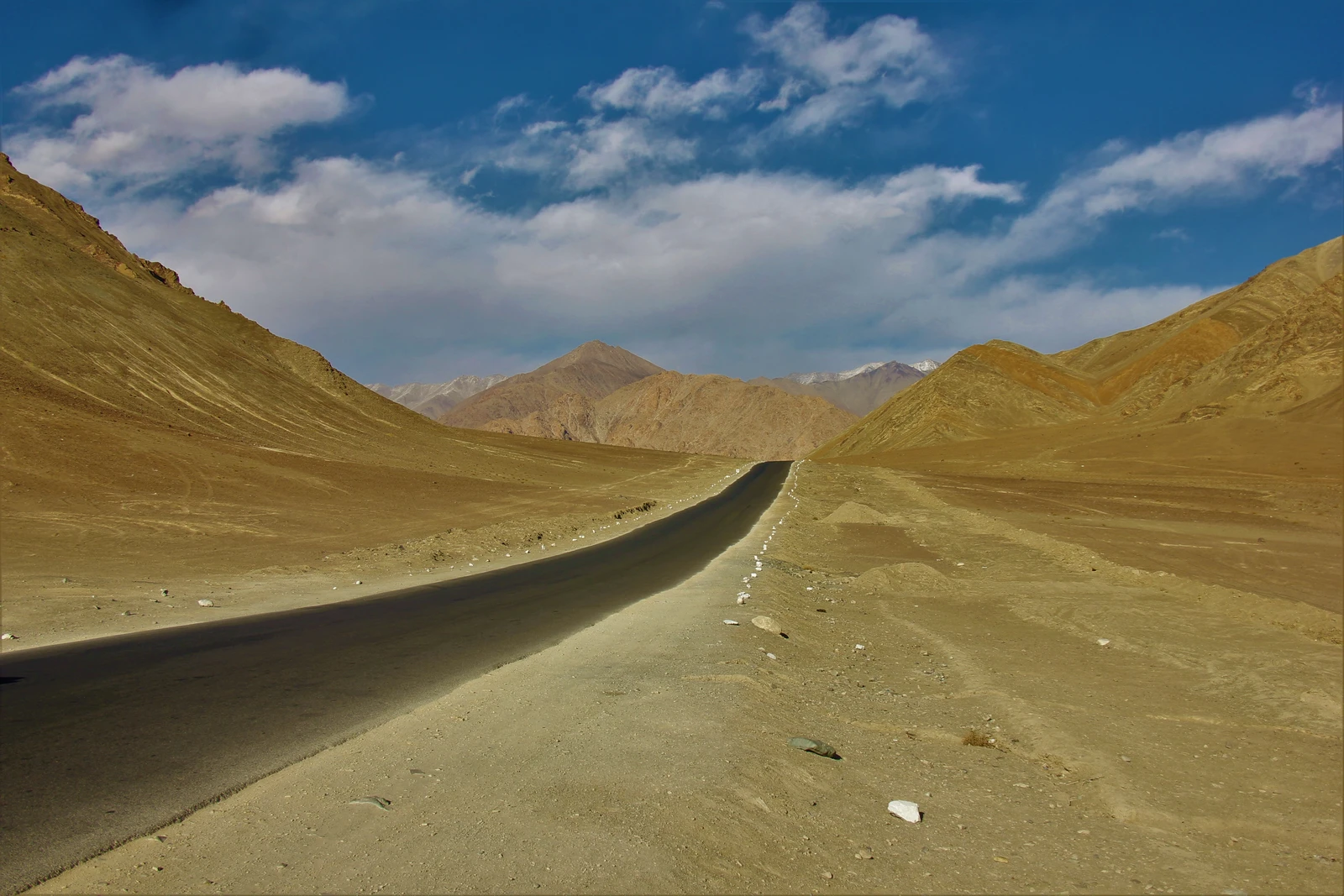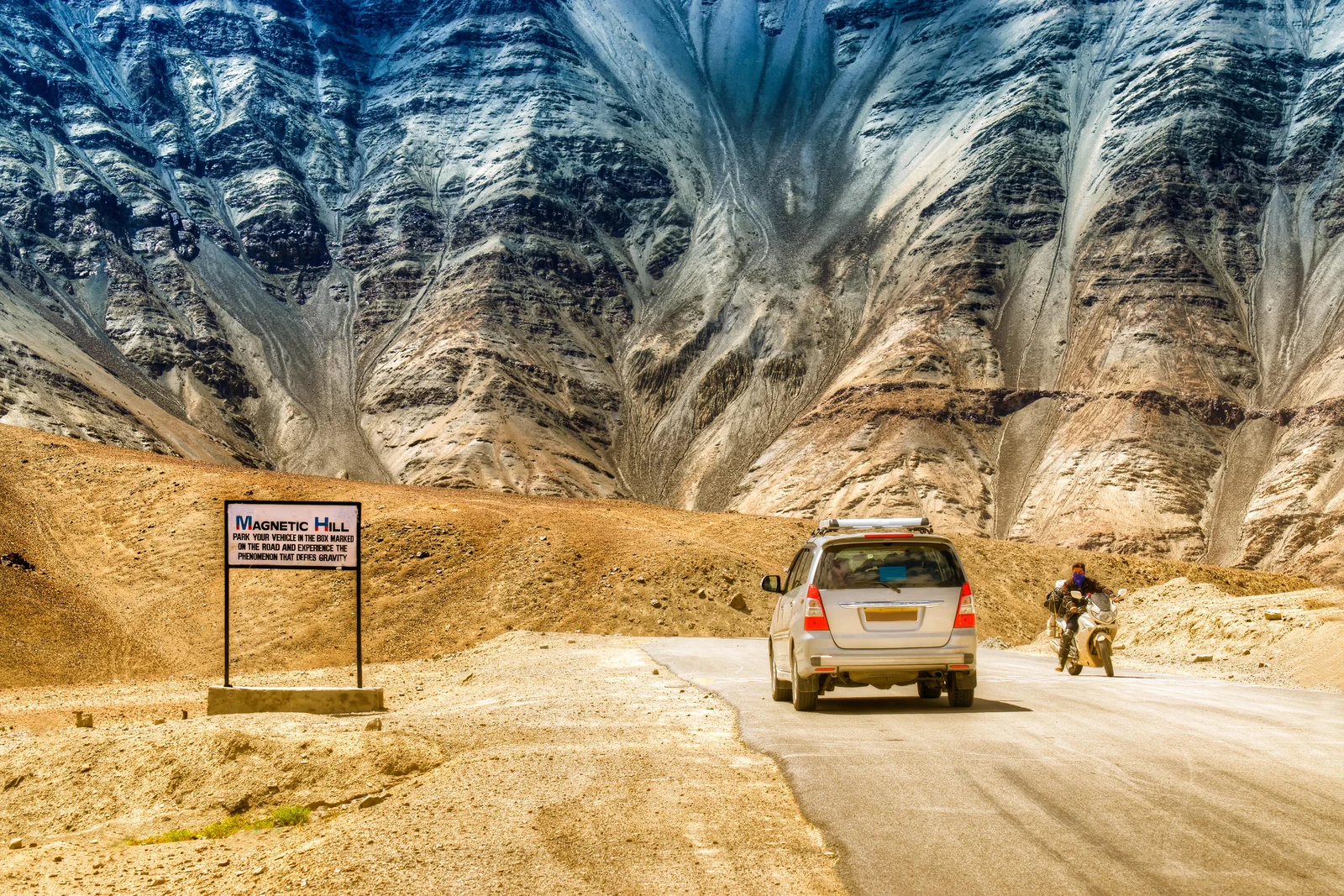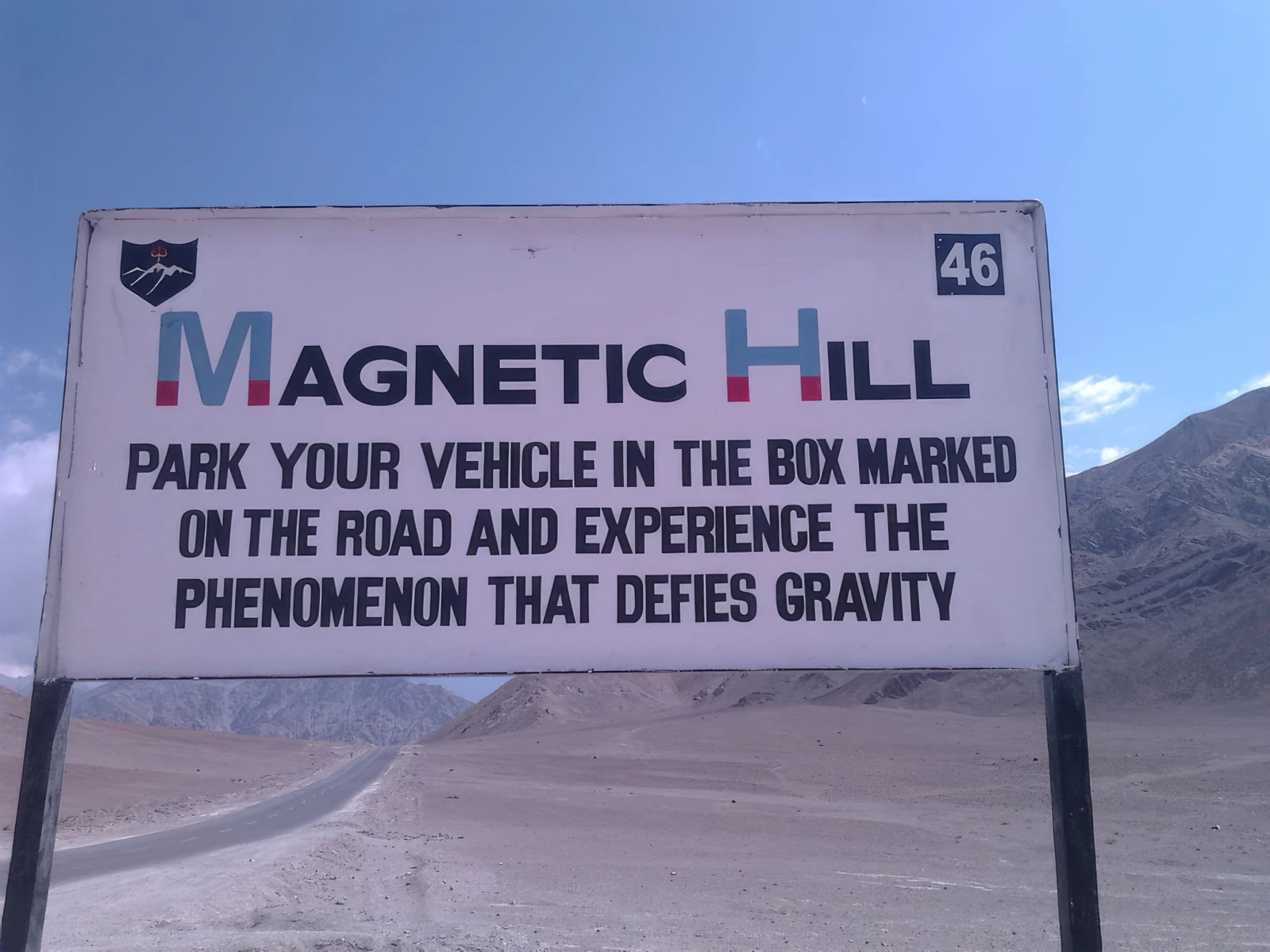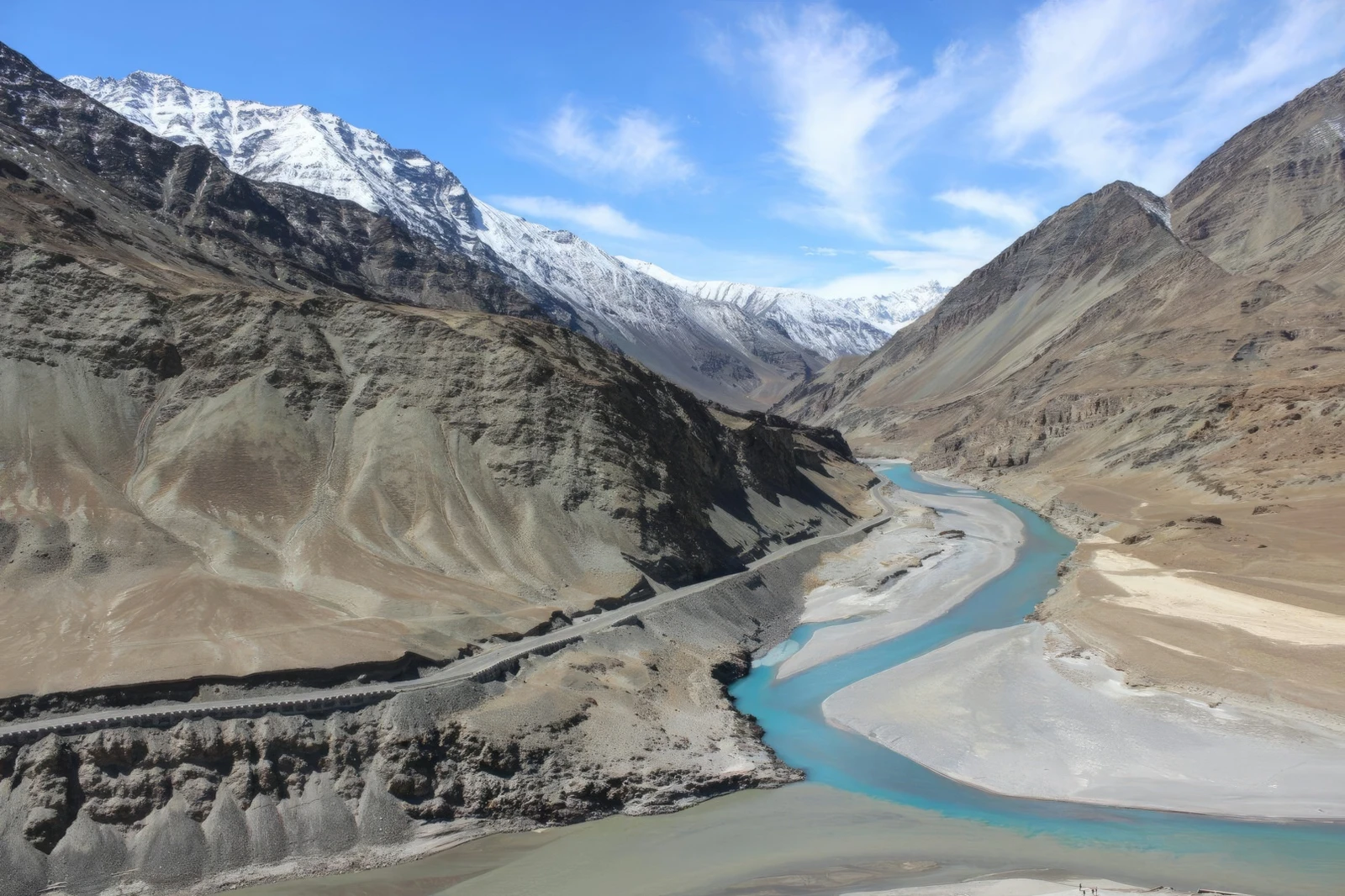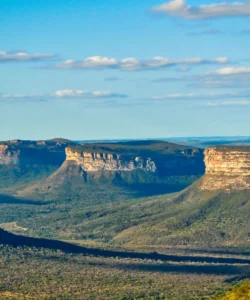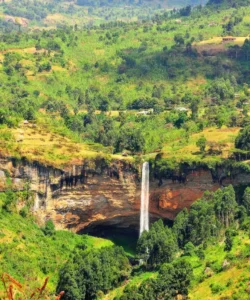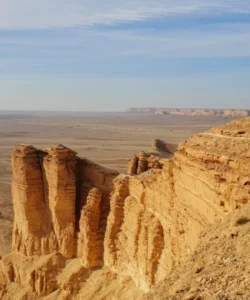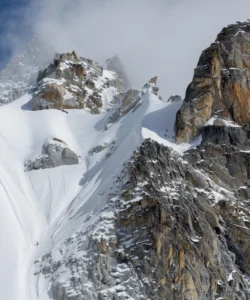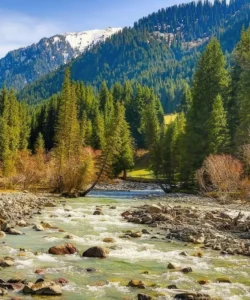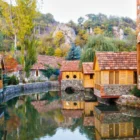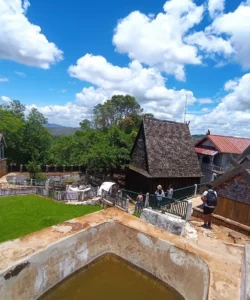Magnetic Hill in India is a captivating natural phenomenon that has fascinated travelers and scientists alike. It’s a stretch of road where, defying gravity, vehicles appear to roll uphill on their own when left in neutral.

Name: Magnetic Hill (often also referred to as “Gravity Hill” or “Cyclops Hill”)
Address: Leh-Kargil-Baltic National Highway (NH-1), near Nimmoo, Leh district, Ladakh, India. It’s situated approximately 27-30 kilometers (17-19 miles) west of Leh city, at an elevation of around 14,000 feet (4,267 meters) above sea level.
How to Get There:
Access to Magnetic Hill primarily involves reaching Leh, the capital of Ladakh, and then taking road transport.
- By Air: The most common way is to fly into Leh Kushok Bakula Rimpochee Airport (IXL). Leh has direct flights from major Indian cities like Delhi, Mumbai, and Srinagar. From Leh Airport, you can hire a taxi or pre-arranged transfer to Magnetic Hill (approx. 45 minutes to 1 hour drive).
- By Road: Many travelers undertake the iconic Leh-Manali Highway or Srinagar-Leh Highway road trips. Magnetic Hill is located on the Srinagar-Leh Highway (NH-1).
- Taxi/Private Car: The most common and flexible way to visit from Leh. You can hire a local taxi or book a tour that includes Magnetic Hill as part of a day trip (often combined with Gurudwara Pathar Sahib, the Indus-Zanskar confluence at Sangam, and Spituk Monastery).
- Buses: Local buses from Leh towards Kargil also pass by Magnetic Hill.
- Scooter/Motorbike Rental: Popular for adventurous travelers, allowing independent exploration.
- Best Time to Visit: The road to Ladakh and Magnetic Hill is primarily accessible during the summer months, from May to September, when mountain passes are clear of snow. This period also offers pleasant weather for visiting.
- Permit: While no specific permit is needed for Magnetic Hill itself, permits may be required for visiting other areas of Ladakh, depending on your itinerary.
Landscape and Architecture:
Magnetic Hill is not a grand man-made structure, but a segment of a mountain road where the unique natural landscape creates a fascinating optical illusion. Its “architecture” is largely the way the natural terrain is perceived.
- Arid Mountainous Terrain: The hill is set amidst the stark, rugged, and barren mountainous landscape of Ladakh, part of the Trans-Himalayan region. The surrounding mountains are often devoid of lush vegetation, dominated by rock and high-altitude desert.
- Indus River: To its east, the sacred Indus River flows, adding a touch of blue to the otherwise brown and ochre landscape, and enhancing the scenic beauty.
- The “Illusion” Spot: The specific spot on the road where the phenomenon is observed is usually marked with a signboard. When a vehicle is parked in neutral gear on this designated spot, it appears to slowly roll uphill. This optical illusion is caused by the layout of the surrounding slopes and the absence of a visible horizon. What appears to be an uphill slope is, in fact, a gentle downhill gradient. The brain is tricked by the visual cues in the surrounding terrain, creating a false perception of elevation.
- Minimal Human Structures: There are no significant architectural structures on the hill itself, preserving its natural, somewhat desolate charm. Any human presence is usually limited to the small signboard marking the spot, and occasionally a few local vendors.
What Makes It Famous:
- Gravity-Defying Illusion: Magnetic Hill is globally famous for the optical illusion where vehicles, when left in neutral, appear to roll uphill against the force of gravity. This intriguing phenomenon baffles visitors and offers a unique, interactive experience.
- Scientific Curiosity and Myth: The hill has sparked both scientific curiosity (leading to the optical illusion explanation) and various local myths and legends. Locals traditionally believe it’s a “road to heaven” where worthy individuals are pulled upwards by divine forces. This blend of science and folklore adds to its mystique.
- Photographic Opportunity: The unusual phenomenon, combined with the dramatic backdrop of the barren Ladakhi mountains and the Indus River, makes it a highly popular spot for unique photographs and videos.
- Part of Ladakh Adventure: It’s a key highlight for anyone undertaking the iconic road trips through Ladakh (Leh-Srinagar Highway or Leh-Manali Highway), serving as a fascinating stopover that breaks the journey with a dose of mystery.
- “Deceptive” Natural Wonder: Unlike other natural wonders that are grand in scale (Himalaya, Loktak Lake) or visually stunning in their formations (Kelimutu, Lonar Lake), Magnetic Hill’s “wonder” is entirely about how human perception interacts with subtle natural gradients, making it a “deceptive” yet captivating site.
Differences from Some Other Wonders:
- Optical Illusion vs. Actual Phenomenon: The most significant difference is that Magnetic Hill’s “magnetic” property is widely accepted as an optical illusion, created by the specific topography and visual cues, rather than a genuine magnetic force or gravitational anomaly. This contrasts with truly magnetic geological features or actual natural forces at play in other wonders.
- Interactive Experience with Vehicles: While other natural wonders can be viewed, hiked, or explored, Magnetic Hill offers a very specific, interactive experience involving vehicles and the sensation of defying gravity, which is its core unique selling proposition.
- Subtle vs. Grand Scale: Unlike the immense scale of the Himalaya (of which it is a small part), or the dramatic visual spectacle of places like Lonar Lake or Kelimutu, the “phenomenon” at Magnetic Hill is relatively subtle and relies on precise positioning and perception.
- Isolated Natural Curiosity: It’s a relatively isolated natural curiosity on a highway, not a large national park (like Jim Corbett) or a complex of multiple natural features (like Sundarbans or Valley of Flowers).
- Lack of Man-Made Architecture: Unlike other Indian wonders like the Taj Mahal, Red Fort, or Khajuraho (which are renowned for their monumental architecture), Magnetic Hill is a purely natural site with minimal human structures, emphasizing its raw, natural landscape.
- High-Altitude Desert Setting: Its location in the high-altitude, arid mountain desert of Ladakh provides a very specific and dramatic backdrop, distinct from the tropical or temperate landscapes of other wonders.
